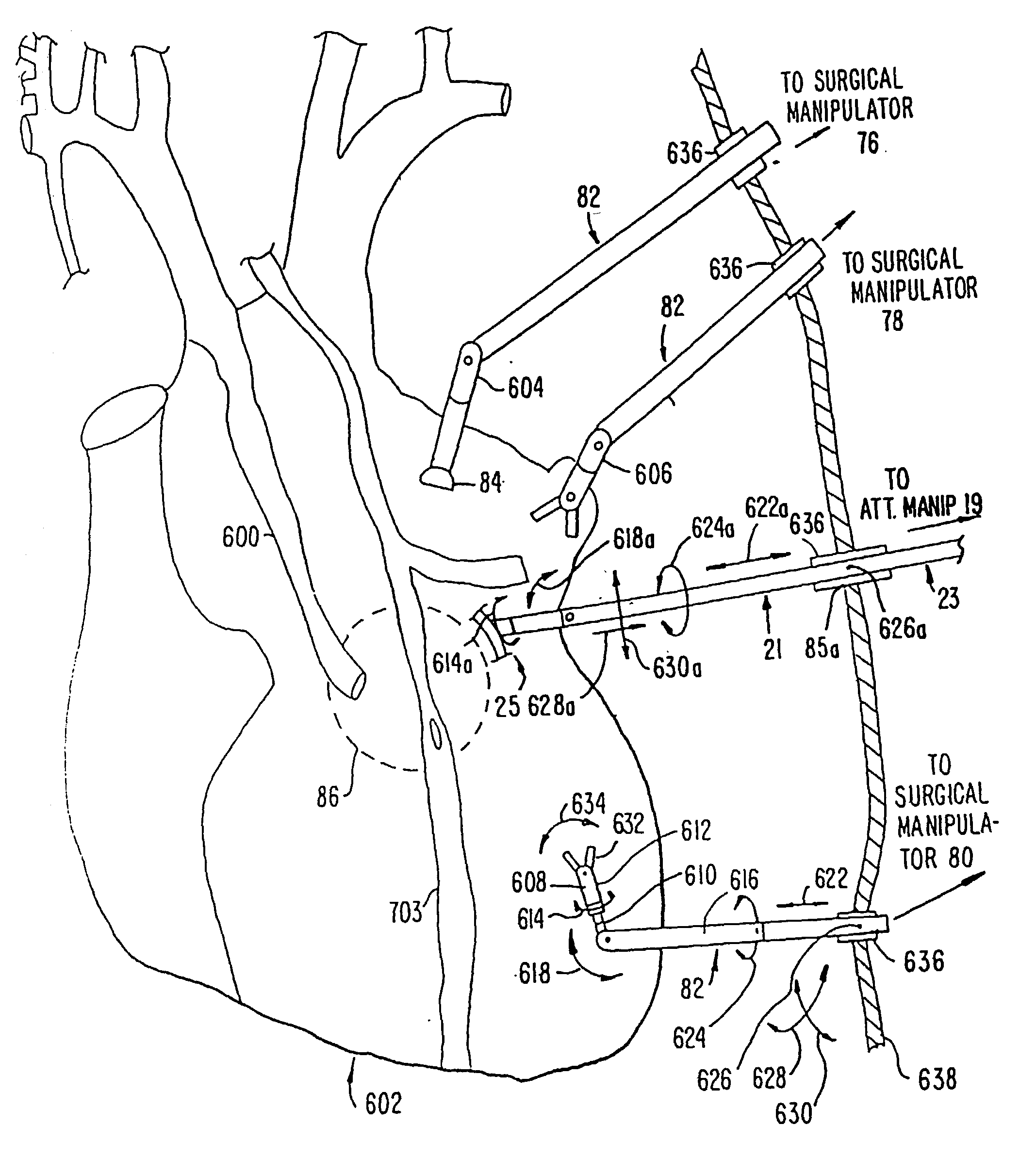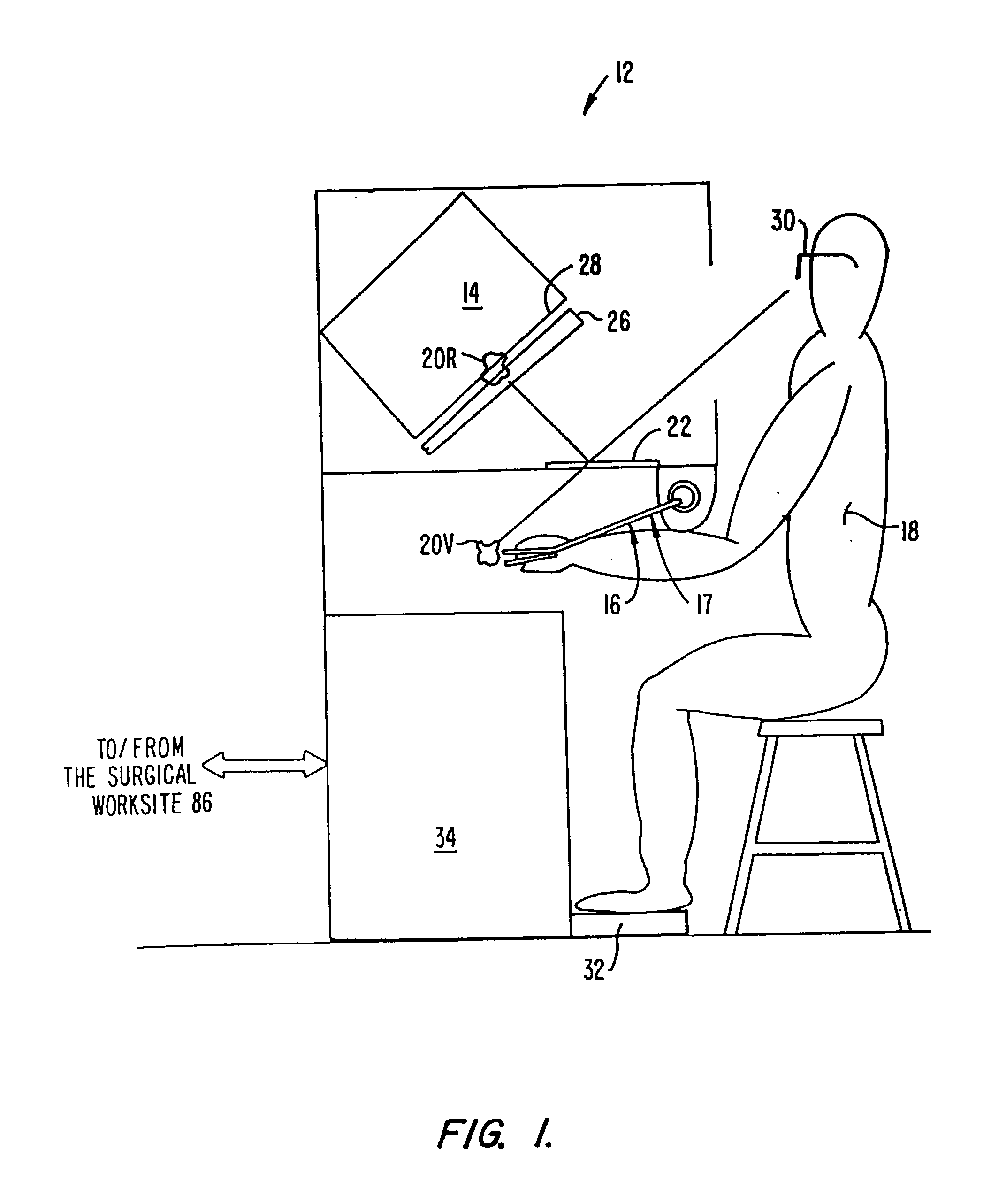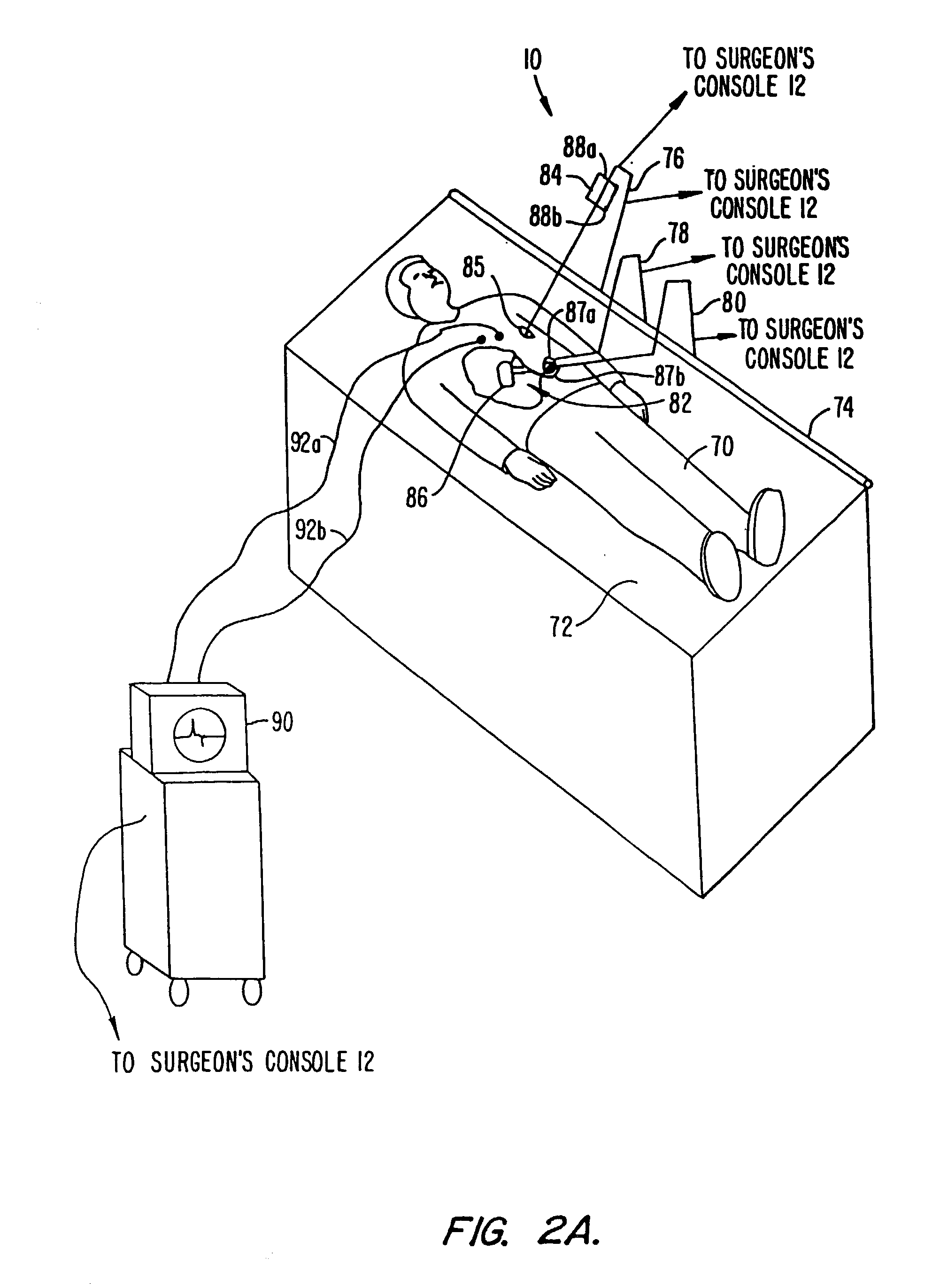Performing cardiac surgery without cardioplegia
a technology for cardiac surgery and non-cardiac surgery, applied in the field of cardiac surgery, can solve the problems of immediate death or damage to myocardial tissue, discomfort and risks of angina and ischemia, and the leading cause of morbidity and mortality in western societies
- Summary
- Abstract
- Description
- Claims
- Application Information
AI Technical Summary
Benefits of technology
Problems solved by technology
Method used
Image
Examples
second embodiment
[0134] FIG. 2B illustrates the present invention adapted for open surgical procedures, such as open coronary surgical procedures. As in FIG. 2A, the surgical manipulators 78 and 80 operate the surgical instruments 82 at the surgical worksite 86 of the patient 70 whilst lying on the operating room table 72. The surgical instruments 82 are inserted through the surgical opening 94 in the patient 70 for performing the surgical procedure. However, because the procedure is an open procedure, the endoscopic camera can be replaced with another viewing system. This embodiment of the invention includes a viewing system 100, which is preferably employed during an open-chest surgical procedure. The viewing system 100 includes a left camera 88a and a right camera 88b that are located outside the body of the patient 70 during the open-chest surgical procedure. The left and right cameras 88a and 88b of the viewing system 100 can be used to provide optical data for motion tracking of the surgical w...
third embodiment
[0135] FIG. 2C illustrates the present invention which includes a position / orientation device 120 in addition to the left and right cameras 88a and 88b. The position / orientation device 120 is a dedicated motion tracking sensor that tracks the motion of targets 121, examples of which are described in greater detail herein below, which are attached to the surgical worksite 86. The position / orientation device 120 may comprise an electromagnetic sensing device which detects the position and orientation of the targets 121, which may be in the form of, for example, active transmitters, or receivers, or the like. Suitable position / orientation devices 120 are available commercially from Polhemus, Incorporated. Further description of a suitable position / orientation device 120 is provided by U.S. Pat. No. 5,453,686 entitled "Pulsed-DC Position And Orientation Measurement System," which is fully incorporated herein by reference as if repeated verbatim immediately hereinafter. The position / orie...
PUM
 Login to View More
Login to View More Abstract
Description
Claims
Application Information
 Login to View More
Login to View More - R&D
- Intellectual Property
- Life Sciences
- Materials
- Tech Scout
- Unparalleled Data Quality
- Higher Quality Content
- 60% Fewer Hallucinations
Browse by: Latest US Patents, China's latest patents, Technical Efficacy Thesaurus, Application Domain, Technology Topic, Popular Technical Reports.
© 2025 PatSnap. All rights reserved.Legal|Privacy policy|Modern Slavery Act Transparency Statement|Sitemap|About US| Contact US: help@patsnap.com



